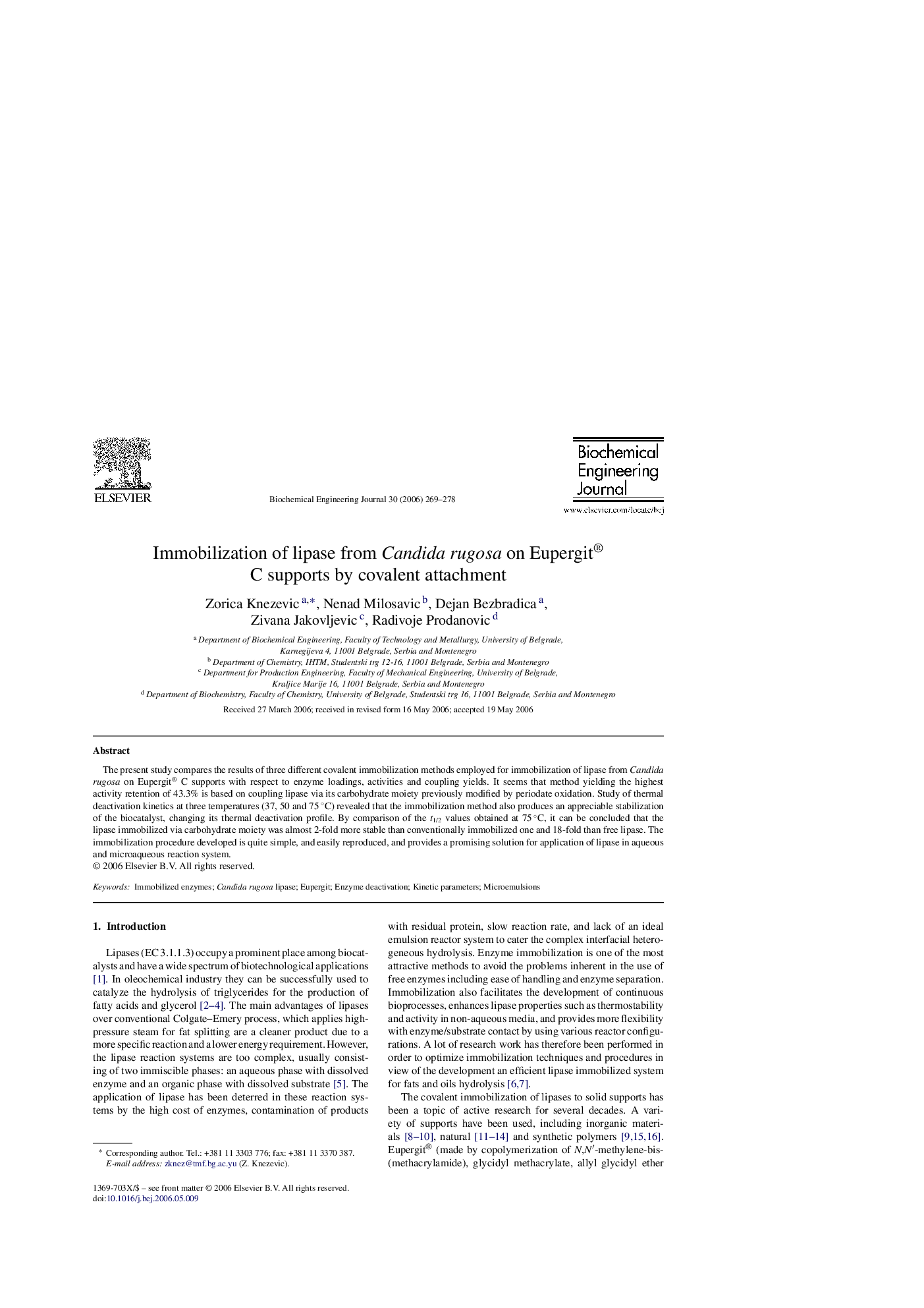| Article ID | Journal | Published Year | Pages | File Type |
|---|---|---|---|---|
| 4876 | Biochemical Engineering Journal | 2006 | 10 Pages |
The present study compares the results of three different covalent immobilization methods employed for immobilization of lipase from Candida rugosa on Eupergit® C supports with respect to enzyme loadings, activities and coupling yields. It seems that method yielding the highest activity retention of 43.3% is based on coupling lipase via its carbohydrate moiety previously modified by periodate oxidation. Study of thermal deactivation kinetics at three temperatures (37, 50 and 75 °C) revealed that the immobilization method also produces an appreciable stabilization of the biocatalyst, changing its thermal deactivation profile. By comparison of the t1/2 values obtained at 75 °C, it can be concluded that the lipase immobilized via carbohydrate moiety was almost 2-fold more stable than conventionally immobilized one and 18-fold than free lipase. The immobilization procedure developed is quite simple, and easily reproduced, and provides a promising solution for application of lipase in aqueous and microaqueous reaction system.
